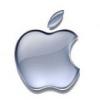-
Posts
10068 -
Joined
-
Last visited
-
Days Won
569
Content Type
Profiles
Articles, News and Tips
Forums
Everything posted by Hervé
-
If we could stick to the topic "ssd m..2 not showing" in this thread...
-
That'll depend on what you're trying to do...
-
Chameleon/Enoch boot options & flags can be listed through the historical "?" command if you enter it at the bootlaoder prompt. Boot option Wait=Yes will stop the boot processbefore loading the kernel. You will see a summary listing tables that loaded. By default, Chameleon/Enoch loads SSDT.aml (or ssdt.aml) from /Extra folder if present. It's just the same as for the DSDT. Pike R Alpha's ssdt generartor script creates a file carrying that file name, so it can be used "as is". If you use a different file name, you'll have to manually specify that at the bootprompt or in the o.c.B.plist. In other words, it's the same old way it's always been for the last 8 or 9 years, if not more. Google is your friend, you can use it to learn about Chameleon flags and options... http://chameleon.osx86.hu/
-

Kernel Panic 6430u (i7-3687u HD4000 1600x900) on Sierra
Hervé replied to antrieb's topic in The Archive
Seems issues are linked to: 1) EFI BIOS settings (point to USB key + internal SSD whilst OP boots off a USB HDD) 2) NVRAM plist files placed in EFI folder The NVRAM file seems to be the main cause as it clearly overwrote SMC keys + SMBIOS parameters defined in the Clover config file. -
Once again... Read the FAQ section. https://osxlatitude.com/index.php?/forum/161-faqs-tutorials/
-
FakePCIID_Intel_HD_Graphics.kext useless without Fake_PCIID.kext... Just like VoodooHDA without AppleHDADisabler.
-

myhack usb stick build with gpt - is it possible to convert to mbr option?
Hervé replied to dimlog's topic in The Archive
You can build a USB installer on a key formatted with an MBR partition scheme, yes. -
https://sourceforge.net/projects/hwsensors/files/
-

Kernel Panic 6430u (i7-3687u HD4000 1600x900) on Sierra
Hervé replied to antrieb's topic in The Archive
There must be some rogue trace of an older VoodooPS2Controller v1.8.21 somewhere. Remove DrHurt's VoodooPS2controller v4.0.0 from Clover EFI folder and put it in /L/E. Then repair permissions and rebuild your cache. I'm not aware of anything the sort but you wouldn't have anything linked to an older VoodooPS2Controller in your PrefPanes, would you? If you can't get rid of the KP, all I can suggest is a fresh re-installation... -

Kernel Panic 6430u (i7-3687u HD4000 1600x900) on Sierra
Hervé replied to antrieb's topic in The Archive
So you're still getting KPs on VoodooPS2Controller? Give the attached version a try (uploaded from my E6230 on which it works perfectly). It's Dr Hurt's R4. VoodooPS2Controller.kext.zip -
You've kept KernelBooter_kexts set to Yes, consequently you can only boot without cache (i.e; with -f flag) and with add-on kexts in /E/E. Copy (not move) your add-on kexts to /L/E, repair permissions, rebuild your cache, set KernelBooter_kexts to No and you'll be able to boot normally. You're using MBP7,1 SMBIOS which is Ok but it seems you simply copied the plist from some place and did not update it to remove/replace the CPU and RAM speeds manually set there. Remove these or adjust according to your M6400.
-
The USB device renaming applies to USB2.0 ports. In case you ignored this, please note that: UHCI refers to USB1.x controllers EHCI refers to USB2.0 controllers XHCI refers to USB3.0 controllers https://en.wikipedia.org/wiki/Host_controller_interface_(USB,_Firewire)
-
Afaik, there is no ready-made bootpack here for this machine, so do as usual: list your hardware specs and look for eventual support & drivers. You have a 2nd gen Sandy Bridge system so you'll have to apply the AppleIntelCPUManagement kext patch to avoid KP. Graphics will depend on HD3000 iGPU or discrete GPU. If HD3000 iGPU, graphics acceleration will be obtained by simple injection of the SNB laptop layout. These are the 2 x priority items. For the rest (audio, LAN, wifi, etc), we'll see as you post your specs.
-
Difficult to say with so little info. Try it.
-
55C to 60C-ish is perfectly normal if CPU runs at Turbo boost speeds. Expect it to idle around/just under 50C. Don't expect 45C or even lower...
-

Which Mac OS X version support to my dell vostro 3568 laptop
Hervé replied to kumar86's topic in The Archive
OP should go for latest Sierra version, regardless... -
You need to activate AICPUPM aka AsusAICPUPM aka AppleIntelCPUPowerManagement patch on Sandy Bridge and Ivy Bridge platforms. User Clover Configurator app to tune your Clover config.
-
https://osxlatitude.com/index.php?/topic/9961-how-do-i-repair-permissions-and-rebuild-the-cache-yosemite-and-later/
-

[SOLVED] Dell Inspiron 10.12.4 initial mouse freezing
Hervé replied to spidey123's topic in The Archive
Or it could simply be a duff physical connection at one cable end... -
Further to fresh experiments with VRAM allocation, I can confirm that the 8th byte of the 2nd line of Azul framebuffers/layouts as displayed above (in 8 groups of 4 bytes per line) is for VRAM allocation and can be set as follows: 40 -> 1024MB 60 -> 1536MB 80 -> 2048MB In my case, changing the Azul FB #12/layout 0x0a260006 from this: 0600 260A 0103 0303 0000 0002 0000 3001 0000 6000 0000 0060 D90A 0000 D90A 0000 to this: 0600 260A 0103 0303 0000 0002 0000 3001 0000 6000 0000 0080 D90A 0000 D90A 0000 increased VRAM from 1536MB to 2048MB.
-
Please read the FAQ section... https://osxlatitude.com/index.php?/topic/8696-is-my-wireless-card-compatible-with-os-x/
-
if you need/want to regulate audio volume with VoodooHDA, you can try and play with values such as iGain in the kext's plist. It's a long time since I've played with VoodooHDA but the VoodooHDA PrefPane (if you install it) allows you to adjust these too.
-
You don't need to quote every message you directly reply to... In all likelyhood, it's a USB issue. Try to unplug and replug the key with the macOS installer. But I would recommend you only use 1 key, not 2. You may also try this revised DSDT where the device-id injection was removed from USB devices + iGPU. DSDT.aml.zip
-
AR9285 needs a DSDT or Atheros40 kext patch to be fully supported but would not be expected to block startup. https://osxlatitude.com/index.php?/topic/2120-inventory-of-supported-and-unsupported-wireless-cards/



